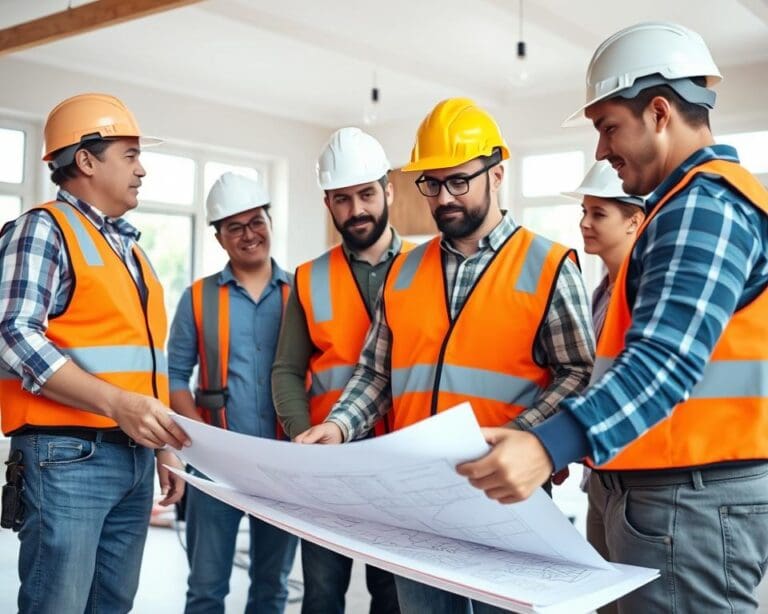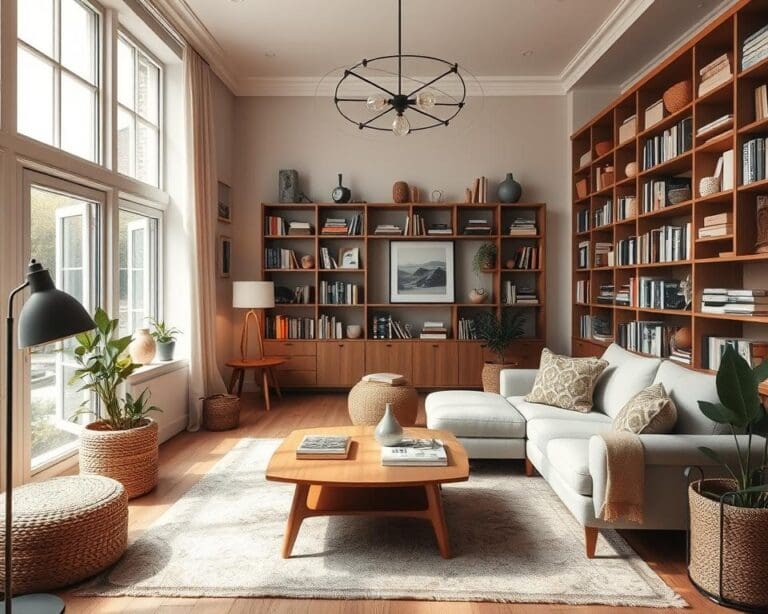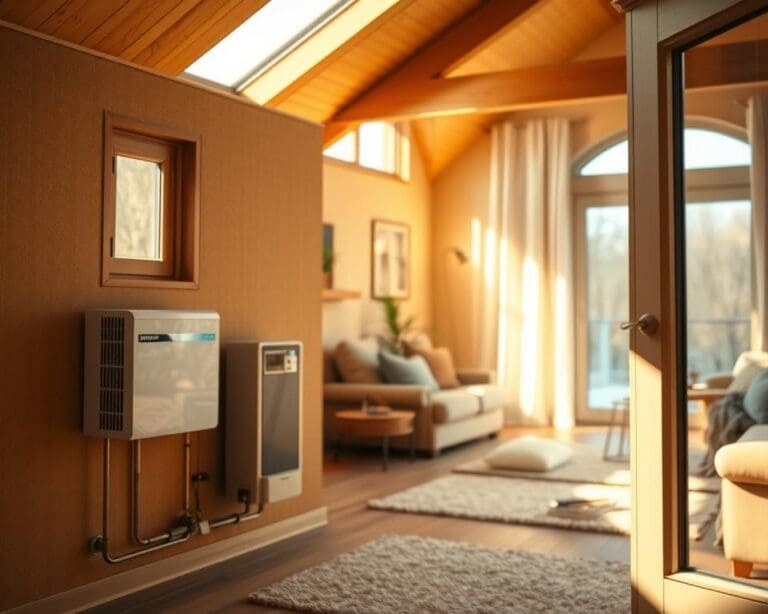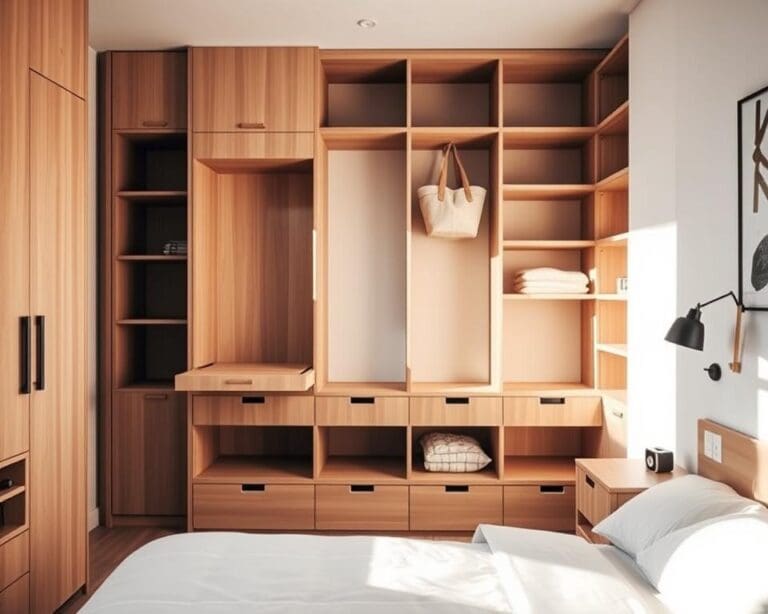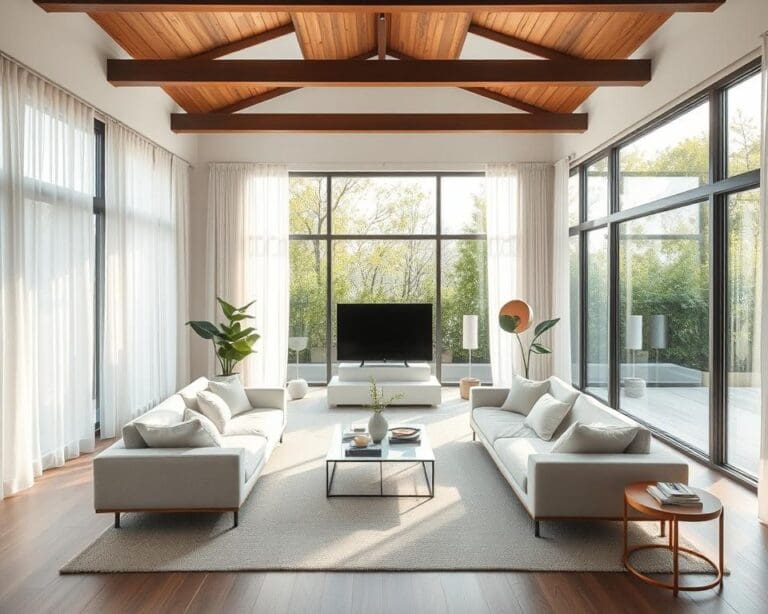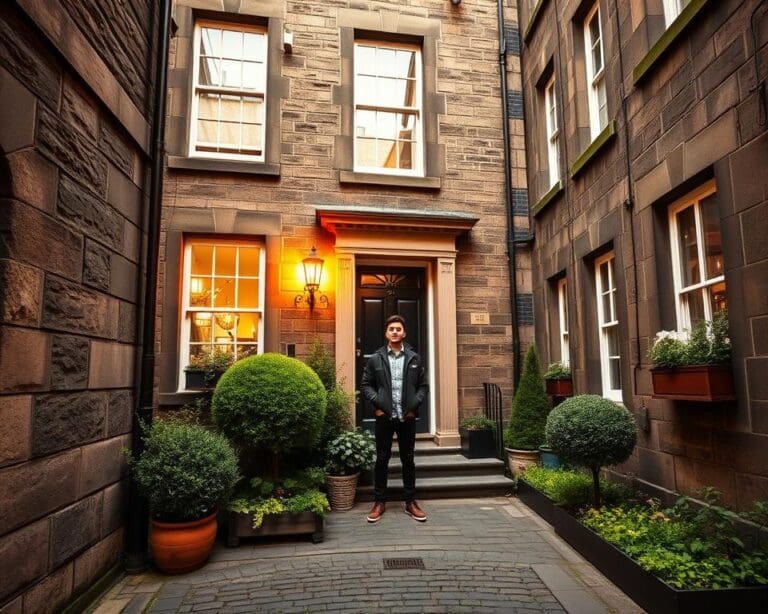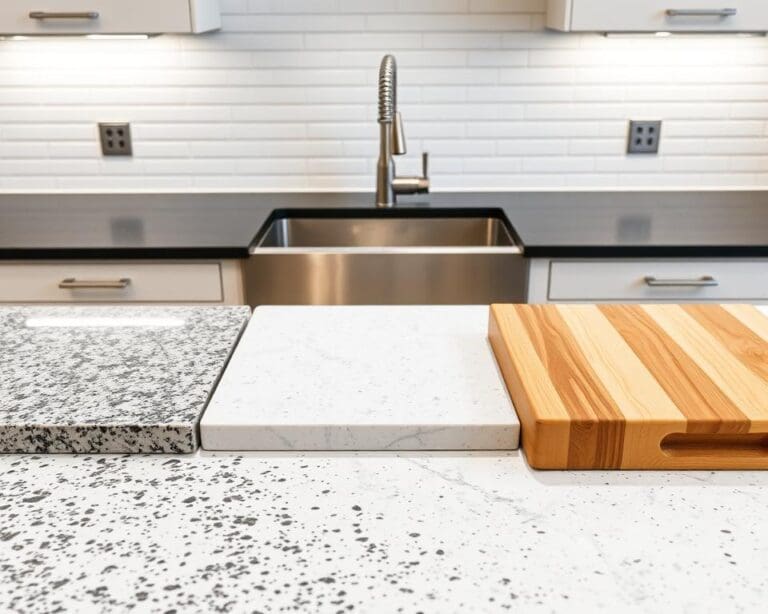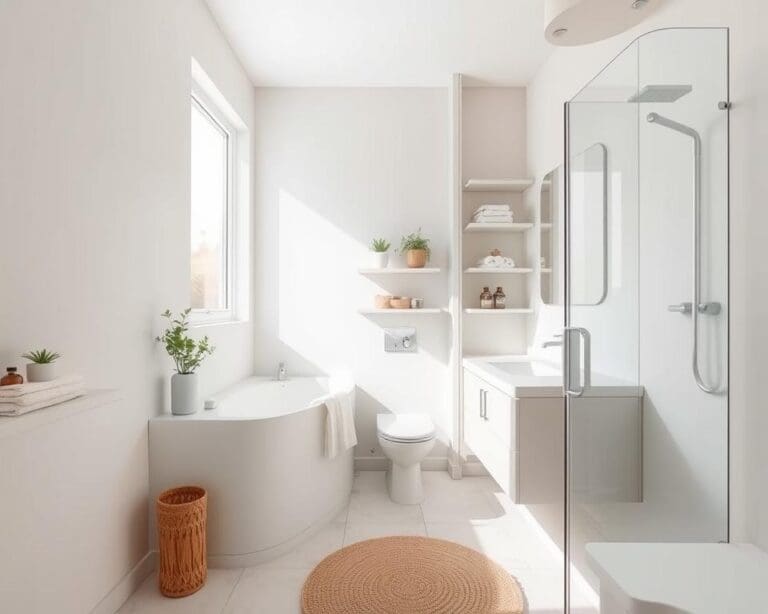As the world increasingly recognises the importance of sustainable building practices, green architecture has emerged as a beacon of cost savings and environmental responsibility. This innovative approach not only prioritises eco-friendly design but also delivers significant fiscal benefits over the lifespan of buildings. By utilising renewable resources, adopting energy-efficient technologies, and integrating sustainable materials, green architecture facilitates a transformation that leads to lower operational costs and reduced resource consumption. According to studies from the Royal Institute of British Architects (RIBA), these strategies are foundational to achieving lasting economic efficiency while fostering a healthier planet.
The Basics of Green Architecture
Understanding green architecture encompasses the integration of environmental considerations into architectural practices. This approach not only addresses the aesthetic aspects of building design but also prioritises sustainability, efficiency, and the well-being of inhabitants. The green building definition highlights structures that are designed to reduce their ecological footprint and promote a healthier environment.
Defining Green Architecture
Green architecture represents a shift towards sustainable methods in building design and construction. It focuses on minimising resource consumption while enhancing the life quality of users. Eco-friendly construction prioritises renewable resources, energy efficiency, and the overall impact on the environment. By implementing green building definitions, architects can create spaces that are not only functional but also sustainable.
Principles of Sustainability
Embracing sustainable architecture principles is crucial for the development of environmentally friendly buildings. Key principles include:
- Energy Conservation: Utilising designs that regulate energy use effectively, such as passive solar heating and natural ventilation.
- Resource Efficiency: Selecting materials that are sustainable, locally sourced, and have minimal environmental impact.
- Natural Materials: Incorporating biophilic design elements that connect occupants with nature, promoting both health and sustainability.
By adhering to these sustainable architecture principles, builders and designers contribute to a future where buildings coexist harmoniously with their environments while addressing contemporary ecological challenges.
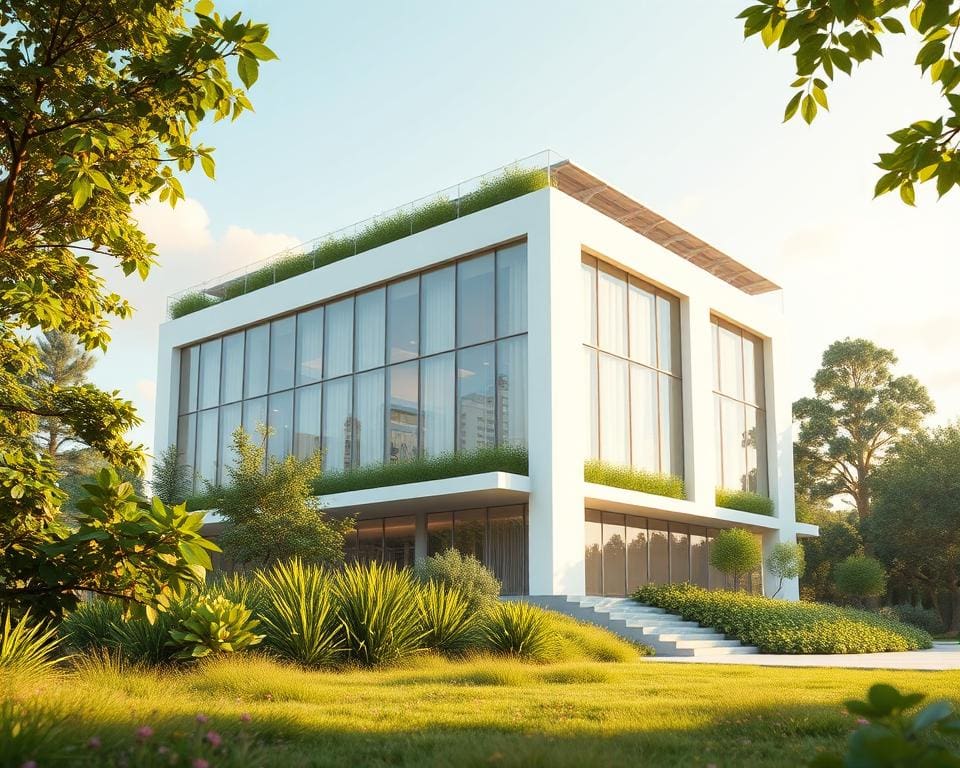
How Does Green Architecture Save Costs?
Green architecture provides a unique way to achieve substantial cost savings through innovation in design and materials. By focusing on energy efficiency, these structures lower energy consumption, translating to significant energy efficiency savings. In addition to reducing utility expenses, green buildings also prioritise low maintenance and enhanced building durability, making them a wise investment for the long term.
Energy Efficiency and Reduced Utility Bills
One of the standout advantages of green architecture lies in its approach to energy efficiency. Sustainable materials and advanced building techniques decrease energy demands, leading to lower utility costs. For instance, energy-efficient windows, high-quality insulation, and renewable energy sources can significantly diminish reliance on traditional energy grids. This emphasis on sustainability not only results in energy efficiency savings but contributes to healthier living environments.
Low Maintenance and Long-Term Durability
Green buildings are designed with longevity in mind. Utilizing materials that withstand the test of time ensures that maintenance is minimal, allowing for a focus on other crucial aspects of property management. The low maintenance aspect not only reduces upkeep costs but enhances building durability, creating a more resilient structure that requires fewer repairs. Investing in durable materials may incur higher initial expenses, yet it results in substantial savings over time, fostering a more sustainable lifestyle.
Initial Investment vs. Long-Term Savings
When exploring green architecture, understanding financial implications is paramount. The initial costs associated with sustainable design can often create hesitation. Yet, these upfront expenditures pave the way for substantial long-term financial benefits. A comprehensive analysis reveals how investments in eco-friendly materials, advanced technology, and adherence to regulatory standards can yield impressive returns over time.
Understanding Upfront Costs
Initial costs in green architecture encompass several factors. Expenses typically include premium materials that may exceed conventional options, cutting-edge energy-efficient technologies, and compliance investments to meet environmental regulations. While these initial expenditures may seem daunting, recognising them as stepping stones towards sustainability is crucial. The allure of modern, energy-efficient housing lies not only in aesthetics but also in its potential for significant reductions in utility bills.
Calculating Return on Investment
Calculating ROI in green buildings transcends mere numbers. It involves assessing current savings versus initial costs across the property’s lifespan. Many studies highlight savings on energy and maintenance, illustrating how sustainable investments often repay themselves within a few years. An investment in a green building may offer an average ROI of 20% or more, making it a financially sound decision for homeowners and developers alike. As evidenced by various case studies, the initial costs are far outweighed by the sustained financial benefits that follow, paving the way to a greener, more prosperous future.
Government Incentives and Financial Assistance
In the realm of green architecture, financial support plays a pivotal role in encouraging sustainable building practices. Various government initiatives aim to alleviate the costs associated with eco-friendly construction projects, offering a range of possibilities for funding and tax relief.
Available Grants and Subsidies
Numerous government grants are available to support architects, builders, and homeowners engaging in sustainable building. These government grants can significantly reduce the financial burden of green projects, making them more accessible to a broader audience. Sustainable building subsidies often cover expenses related to energy-efficient systems, renewable energy installations, and environmentally friendly materials.
Tax Benefits for Sustainable Building
In addition to direct financial assistance, there are valuable tax incentives for eco-friendly projects that facilitate long-term cost savings. These tax benefits reward individuals and businesses for investing in energy-efficient technologies and sustainable infrastructure. By taking advantage of such incentives, property owners can not only contribute to a greener future but also experience substantial financial relief throughout the lifecycle of their investments.
Case Studies of Cost Savings in Green Architecture
A range of cost-saving case studies illustrate how embracing green architecture can lead to substantial financial benefits. For instance, The Edge, an office building in Amsterdam, has become a benchmark for successful green buildings worldwide. Designed by PLP Architecture, it features advanced energy-saving technologies, resulting in operational costs that are up to 70% lower than traditional structures. This demonstrates how eco-design not only contributes to environmental well-being but also to financial sustainability.
Another exemplary project is the Bullitt Centre in Seattle, often hailed as one of the greenest commercial buildings globally. Its design incorporates rainwater harvesting and solar energy, significantly reducing utility costs. A study conducted by the International Living Future Institute has revealed that the Bullitt Centre achieves net-zero energy usage, making it a prime example of how the financial benefits of eco-design can be realised when building environment is prioritised. These case studies highlight the urgent need for integrating sustainable principles in the construction industry.
Additionally, residential green buildings are demonstrating impressive cost savings as well. The home-building company, Bensonwood, employs innovative wood construction methods that not only boost insulation but also decrease long-term maintenance expenses. Their projects showcase that the implementation of green technologies and materials offers homeowners the dual advantage of lower operating costs and a reduced carbon footprint. As these cost-saving case studies accumulate, it becomes increasingly evident that green architecture is not merely a trend, but a necessity for a fiscally and environmentally sound future.


